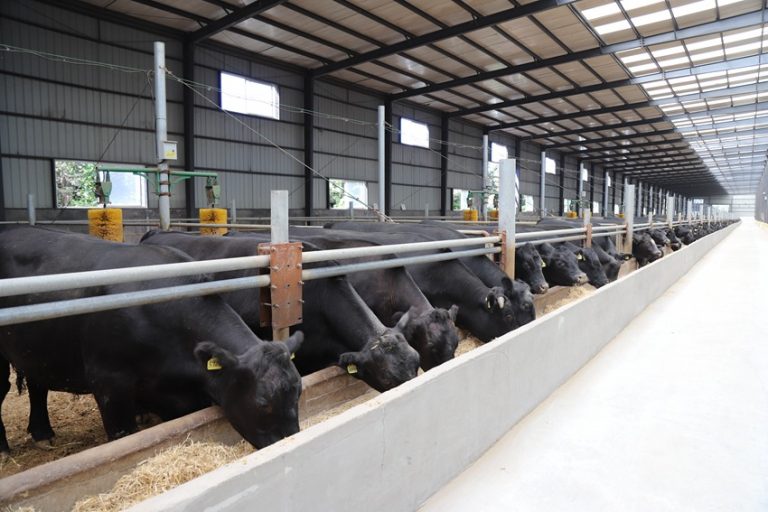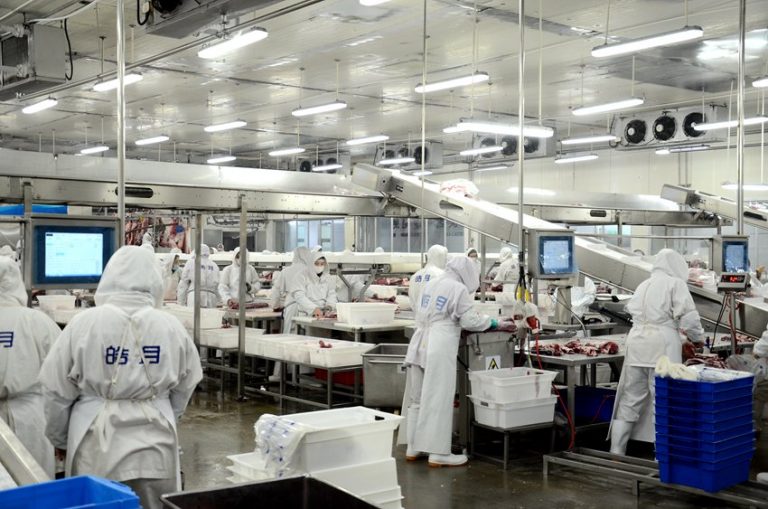
By Meng Haiying, People’s Daily
In a breeding base of Haoyue Group, a leading beef product company, 800 fattening cattle are eating, pacing, or enjoying massage therapies with the musical sound of the piano.
Big data is crucial in operating this clean tech-ish breeding base, which covers 15,000 square meters in Changchun, northeast China’s Jilin province. Every cattle has a QR code that shows its age, vaccination record, and even how much forage it has consumed and how much weight it has put on during each stage of its growth.
These cattle, known as Woking black cattle, are a patented breed of Haoyue Group, which differ from regular beef cattle in terms of breeding techniques and environment.
According to an executive of Haoyue Group, each of the cattle weighs about 750 to 850 kilograms and results in beef of approximately 450 kilograms on average. The meat is sold in five grades following quality, with the price ranging from 90 yuan ($12.84) to 2,600 yuan per kilogram, meaning the beef part of a cattle is worth over 130,000 yuan, equivalent to a regular passenger car.
Technology and human resource are critical to agricultural modernization. Haoyue Group has improved the quality of cattle breeds and secured germplasm resources with sci-tech innovation, reformed its breeding structures, and optimized the breeding process with big data.
Supported by agricultural mechanization and intelligence, the company has developed the traditional cattle beef industry into an industrial chain that involves breeding, cattle farming, beef processing, and sales.
This mirrors the high-quality, high-production, and low-consumption characteristics of precision agriculture and is a miniature of modern agricultural development. It has significance for the application of technologies in other fields of agriculture.
Animal husbandry supported by digital technology can satisfy people’s needs better and thus embraces a huge market.

Despite the impact of multiple factors, the output value of Haoyue Group bucked the trend over recent years. The beef bred and produced in its breeding base, assisted by digitalization, is now highly recognized by the market. It results from higher demands from consumers for healthy and quality products.
In recent years, Chinese consumers have improved their living standards, upgraded consumption concepts, and optimized their dietary structure. Driven by digital opportunities, industrial development, and product improvement will undoubtedly create a more profitable market.
The animal husbandry industry, upon upgrading, would accelerate low-carbon circulation and green development and enjoys huge development potential.
The “No. 1 central document” for 2023 released by China’s central authorities urged more vigorous development of silage and accelerated utilization of straws in animal husbandry.
Jilin has launched a program that encourages farmers to take eco-friendly corn straws as cattle feed and guides them to breed cattle with technology. The province has developed an intelligent and digital platform for animal husbandry. As a result, more farmers and breeders have changed their methods and improved farming efficiency, embracing a green development path.
Every part of a cow or bull is profitable. Apart from beef, cow leather can be made into valuable shoes, bags, and jackets and also be sold to automakers for automotive interiors. The bones and cartilage of the animal are a source of calcium powder and chondroitin sulfate, and heparin sodium can be extracted from the lungs and small intestines. Besides, biological valves processed from bovine pericardium can also simulate human valve functions.
Today, empowered by industrialization and big data thinking, Jilin has developed a complete industrial chain involving cattle breeding, ruminant feed, food processing, biomedicine, leather making, and organic fertilizer industries.
The prosperity of the cattle industrial chain reflects the vitality of agricultural modernization and the broad space of diversified intensive processing in the animal husbandry sector. The province will embrace longer industrial chains and more giant industrial clusters by promoting integrated development of the primary, secondary, and tertiary industries, collaborating all sectors along the chain, and expanding the development paths with digital technologies.










